Titanoboa (Titanoboa cerrejonensis)
The largest snake in the world
While the last dinosaurs slowly faded away, 60 million years ago a new giant, able to consume a crocodile, appeared on the surface of the Earth. In the incredibly hot and humid jungle, growing on the area of present-day Colombia, the largest snake ever discovered – Titanoboa – was crawling on the forest floor. The block-busting Anaconda chasing Jennifer Lopez when compared to a Titanoboa seems only a rather overgrown Leptotyphlops carlae (the tiniest snake in the world 😉 ).
Introduction
Deep in the heart of the Cerrejón coal mines in Colombia, something colossal was unearthed. It was a creature so huge, so monstrous, and so terrifying, that it seemed as though it had emerged straight from the pages of a science fiction novel. But this was no work of fiction – this was the Titanoboa, a prehistoric serpent that ruled the swamps and rivers of South America some 60 million years ago.
With its massive body and terrifying girth, the Titanoboa was a true behemoth. Measuring up to 15 meters in length and weighing as much as 1,140 kg, this monstrous snake was the largest predator of its time, and one of the biggest creatures ever to have slithered across the face of the earth.
But what was the Titanoboa really like? How did it hunt and survive in the wilds of the ancient rainforest? And why did it go extinct, despite its incredible size and strength?
As scientists continue to study this prehistoric predator, they are slowly uncovering the answers to these and other questions. Through painstaking research and careful examination of fossil remains, they are piecing together a picture of a creature that was truly remarkable in every sense of the word.
In this article, we will explore the fascinating world of the Titanoboa, from its incredible anatomy and physiology to its fearsome hunting techniques and ultimate demise. We will delve deep into the science of this snake, uncovering the secrets of its success and the reasons for its downfall.
So strap yourself in and get ready for an adventure like no other, as we journey back in time to discover the wonders of the Titanoboa – a creature that truly embodies the majesty and mystery of the natural world.

Classification
- Family: Boidae
- Subfamily: Boinae
- Genus: †Titanoboa
- Species: † T. cerrejonensis
- Name: Titanoboa cerrejonensis
Areas of occurrence
With all certainty, Titanoboa inhabited the region of present-day Colombia – the Cerrejón formation in the Northern part of the country, where a swampy jungle has grown, home for animals of unimaginable for today’s human sizes. Apart from the Titanoboa, the jungle was inhabited by tortoises the size of a kitchen table and crocodiles even larger than these observed today.

Characteristics
Appearance
The snake from the Paleocene epoch (60 – 58 million years ago) much resembled the present-day boa in terms of its appearance. As a typical constrictor, it had moveable skull bones, which allowed it to swallow enormous animals (e.g. crocodiles). As we know, snakes can swallow prey of a length up to 1/4 of theirs. Therefore in the case of Titanoboa, this means animals almost 4 meters (13 ft) long!
Skull bones were not connected with each other directly, but by flexible tendons. Probably it had a dark coloration – it could hide in the dark, swampy equatorial forests and in the depths of rivers, hunting for any animal that found in its vicinity.

Present-day cousins
Today’s largest snakes are not as big as Titanoboa. Considering that this Paleocene reptile is systematized as a member of the Boinae subfamily, a comparison with its modern-world relative: anaconda, would be to the point. Anaconda (Eunectes) is a viviparous snake inhabiting the tropical rainforests of South America, being the heaviest presently living snake – its weight may range up to 250 kg.
Its sizeable weight is related to the aquatic environment it lives in. It can achieve speeds of even 20 km/h in water. Titanoboa with body weight of over 1 ton also inhabited the aquatic environment and was an excellent swimmer.
The longest presently living snake – oviparous reticulated python (Python reticulatus/ Broghammerus reticulatus) living in South-East Asia, Philippines and Indonesia may reach a maximum length of around 10 meters (32ft 10 in), an average reticulated python measures about 6 meters (19ft 8 in)). Titanoboa reached the length of up to 15 meters (49 ft 2.6 in) – typically 12 – 15 m (39 ft – 49 ft) and weight of over 1 ton (about 1135 kg (2502 lb)).

Size speculations
The speculated reason for the disparity between the size of present-day snakes and Titanoboa is its natural environment. 60 million years ago the area of today’s Colombia’s mean air temperature was higher than nowadays, it was 30-34oC (86 – 93 ºF) on average.
High temperatures presumably trigger the enormousness of land organisms. It is also believed that the huge sizes of Paleocene animals were determined by higher atmosphere oxygenation, despite higher content of carbon dioxide than presently. Researchers are still studying the reasons behind Titanoboa’s gigantic size.

Lifestyle / hunting
Titanoboa, reticulated python and anaconda – like every other snake – are carnivorous predators. Reticulated python hunts for lizards (monitor lizards), mammals and birds. It can devour a whole domestic pig. Anaconda – a snake leading an amphibious life – hunts for fish, birds and mammals inhabiting areas in close proximity to water reservoirs (boars, tapirs, deer or even leopards). It can swallow a whole prey much larger than itself thanks to its stretchable jaws. Titanoboa hunted in a similar manner, yet owing to its enormous size it could have eaten a whole crocodile measuring even 4 meters.
A distant relative of the anaconda was not venomous, as all constrictors were. The Titanoboa’s main weapon was its massive weight, body surface area and the power of its constriction. It crushed its prey with a force of 400 kg per square inch (which is equivalent to 28 tons/m2). Its constriction force is comparable to being trampled by one and a half Brooklyn Bridges (the total bridge weight is 14 680 tons).
Titanoboa, much like an anaconda, hunted submerged under the water surface, lifting its head above the water, lying in wait for its prey.

Breeding
Titanoboa’s breeding habits are a great unknown. It could be viviparous like an anaconda or oviparous like a python. Systematizing it as a genus of Boinae subfamily would suggest that it was viviparous.
Electromechanical Titanoboa
In 2011 Charlie Brinson in collaboration with his team created a 10-meter (32ft 9.7in) electromechanical incarnation of a Titanoboa snake. 20 high-performance aluminum vertebrae and 40 hydraulic motors were used in construction. Developing the structure into a complete 15 m (49ft 2.6in) model is already being planned.
Titanoboa replica
The Smithsonian Institution is the greatest congregation of museums, educational and research centers in the world, located in Washington DC. 22 March 2012 was the date of the official presentation of a full-scale Titanoboa replica.
The created model presents a 15 meter (49ft 2.6in) long snake weighing 1,100 kg (2,425 lb). Presently the snake is on a ‘world tour’ and is presented at numerous exhibitions.

Detailed characteristics / size
Titanoboa (Titanoboa cerrejonensis)
- Length: 12 -15 meters (39ft – 49ft)
- Diameter: 1m (3ft 3.4in) at the widest section (larger after swallowing prey)
- Weight: 1,000 – 1,140 kg (2,204 – 2,513lb)
- Distribution: 60 – 58 million years ago; present-day Colombia
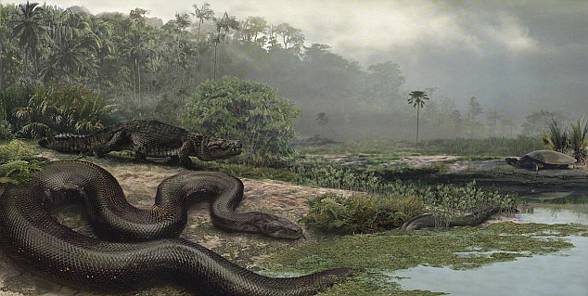
Titanoboa – interesting facts
- Titanoboa – as every snake – was poikilothermic.
- A group of paleontologists working in the Cerrejón formation in Colombia found as many as three well-preserved Titanoboa’s skulls. The scientists were very fortunate, considering the fact that a snake’s skull is very weak and brittle due to large tendon content, which decomposes quickly.
- The Cerrejón formation holds the largest coal reserves in the world.
- The areas where the Titanoboa fossils were found are most likely the only place in the world where a tropical Paleocene ecosystem could be investigated.
- Titanoboa was discovered in 2009.
- Titanoboa has its own full-sized replica, on display in the Natural History Museum in Washington. The world tour of this sculpture of the world’s largest snake began in 2013.
- A 1.5 hour documentary about Titanoboa named ‘Titanoboa: Monster Snake’ was released in 2012.

Discussion / Podcast on Titanoboa cerrejonensis
Let’s listen to a discussion about Titanoboa cerrejonensis – probably the largest snake that ever existed.
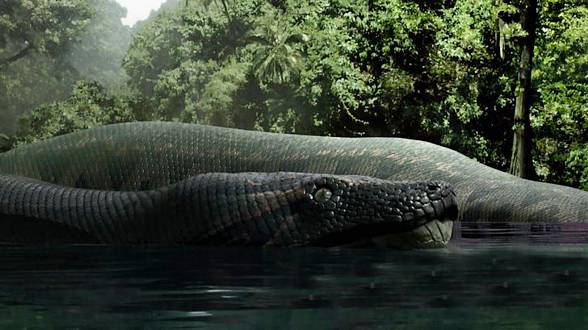
Recommended
- Most venomous snakes – Top 100
- Longest snakes – Top 10
- Anaconda
- Reticulated python
- Fastest animals
- Fastest birds
- Largest eagles







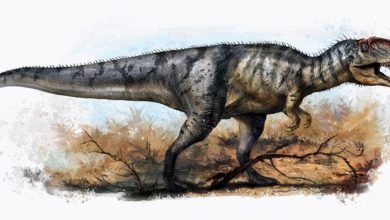
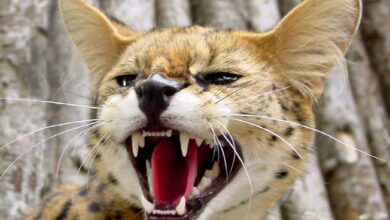



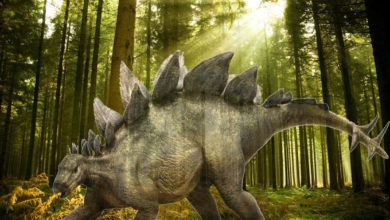






Thank you, I’m really fascinated by this snake and this is very internersting to me